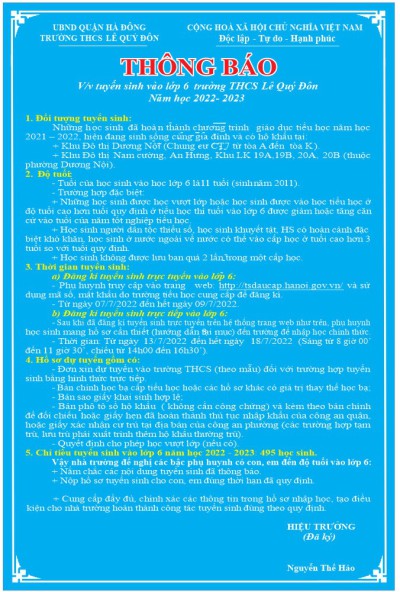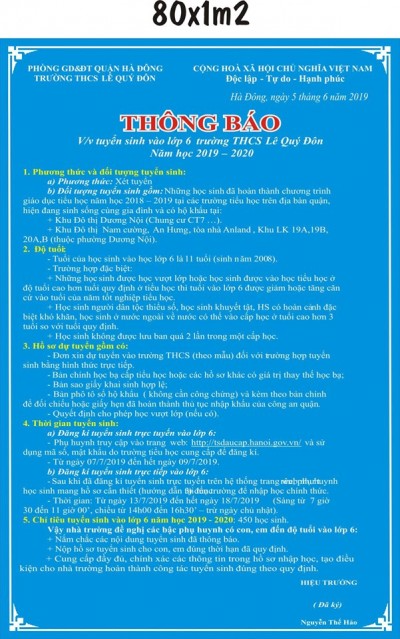
 Kế hoạch tuyển sinh lớp 6 trường tiến lên miền nam chặt heo
năm học 2022-2023
Kế hoạch tuyển sinh lớp 6 trường tiến lên miền nam chặt heo
năm học 2022-2023
 Thông báo Tuyển sinh vào lớp 6 năm học 2020-2021
Thông báo Tuyển sinh vào lớp 6 năm học 2020-2021
 Danh sách trúng tuyển vào lớp 6 - trường tiến lên miền nam chặt heo
năm học 2021-2022
Danh sách trúng tuyển vào lớp 6 - trường tiến lên miền nam chặt heo
năm học 2021-2022
 KẾ HOẠCH TUYỂN SINH LỚP 6 TRƯỜNG tiến lên miền nam chặt heo
NĂM HỌC 2023-2024
KẾ HOẠCH TUYỂN SINH LỚP 6 TRƯỜNG tiến lên miền nam chặt heo
NĂM HỌC 2023-2024
 Thông báo tuyển sinh lớp 6 trường tiến lên miền nam chặt heo
năm học 2022-2023
Thông báo tuyển sinh lớp 6 trường tiến lên miền nam chặt heo
năm học 2022-2023
 HỘI CHỢ XUÂN tiến lên miền nam chặt heo
2020
HỘI CHỢ XUÂN tiến lên miền nam chặt heo
2020
 Kế hoạch tuyển sinh vào Lớp 6 trường THCS Lê Lợi quận Hà Đông năm học 2021-2022
Kế hoạch tuyển sinh vào Lớp 6 trường THCS Lê Lợi quận Hà Đông năm học 2021-2022
 NHÀ TRƯỜNG XIN ĐƯỢC THÔNG BÁO TỚI QUÍ PH KẾ HOẠCH TỰ CHỦ TÀI CHÍNH CỦA UBND QUẬN HÀ ĐÔNG ĐỐI VỚI MỘT SỐ ĐƠN VỊ SỰ NGHIỆP CÔNG LẬP.
NHÀ TRƯỜNG XIN ĐƯỢC THÔNG BÁO TỚI QUÍ PH KẾ HOẠCH TỰ CHỦ TÀI CHÍNH CỦA UBND QUẬN HÀ ĐÔNG ĐỐI VỚI MỘT SỐ ĐƠN VỊ SỰ NGHIỆP CÔNG LẬP.
 Sinh hoạt ngoại khóa tháng 11/2018
Sinh hoạt ngoại khóa tháng 11/2018
 Kế hoạch tuyển sinh vào lớp 6 năm học 2019-2020
Kế hoạch tuyển sinh vào lớp 6 năm học 2019-2020